Cavalier and hero
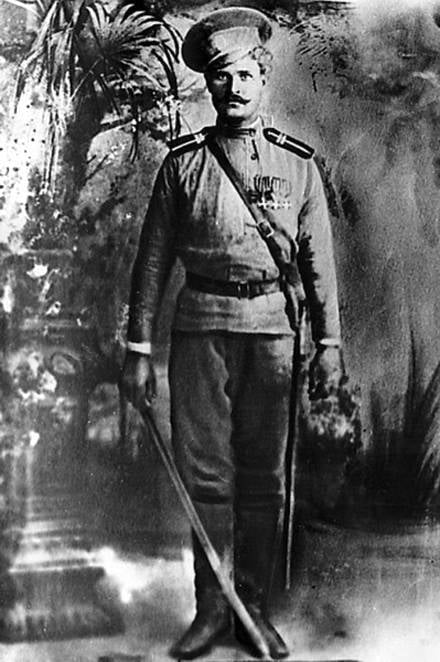
On January 26, 2007, the State Duma in the Russian calendar set a new memorable date - the Day of the Heroes of the Fatherland, which is now annually celebrated in our country on December 9. On this day, according to the plan of the parliamentarians, the country should remember and honor its citizens who have been awarded the title Hero of the Soviet Union, Hero of Socialist Labor, Hero of the Russian Federation, the Order of St. George or the Order of Glory.
The point is what to say, good. Especially since the date for such celebrations was not chosen by chance: December 9 (November 26 old style) in Russia until 1917 was celebrated on the Day of St. George's Cavaliers.
In our stories, rich in war, and heroes, and gentlemen was enough. During and after the Great Patriotic War, there were even those who, to their crosses of St. George, deserved in the First World War, added a heroic Golden Star. And even two!
By the end of the war, the two crosses and two Stars had Marshals of the Soviet Union Georgy Zhukov, Rodion Malinovsky and Konstantin Rokossovsky, the legendary partisan commander Lieutenant General Sidor Kovpak. Marshal Semyon Timoshenko had three crosses of St. George, but he received his first Gold Star in 1940, the second in 1965. In 1978, Army General Ivan Tyulenev became a Hero of the Soviet Union, having earned four crosses of St. George on the First World War. The famous Commander of the Civil War and the Soviet Marshal Semyon Budyonny to 1917, the year was also marked by St. George's crosses of all four degrees, but he received all his three Gold Stars after the Victory.
And was there such a person who could become both a full George Knight and a Hero of the Soviet Union even before the festive salutes of May 1945?
It turns out there was.
His name was Konstantin Iosifovich Nedorubov.
Son of a quiet don
He appeared on the light in June 1889 on the farm Rubezhniy stanitsa Berezovskaya Ust-Medveditsk district of the region of the Don (now Danilovsky district of the Volgograd region).
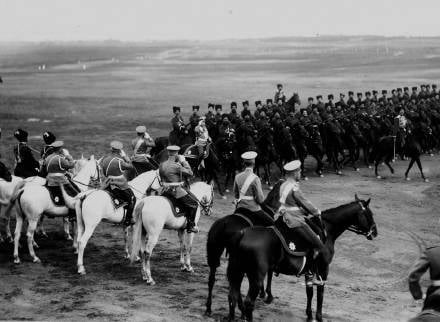
The village was not one of the poor: at the beginning of the twentieth century it “had 426 yards, in which the 2524 man of the Cossack class, who owned more than seven thousand acres of arable land, lived.” There were a Rubezhna magistrate, a judicial investigator and a bailiff, a veterinary and a medical station, two junior parochial schools, a parochial school operated. Worked two windmills, brick and leather factories. It is hard to believe in it, but already then the postal and telegraph office and savings and loan services were available to the residents of the village ... Oh, and the Cossacks lived hard under the tsarist regime!
It was in this stanitsa that the seventy-two-yard Rubezhniy farm was entered, the most typical one, one of a hundred of such, stretching along the Don. Kostya Nedorubov's parents never were prosperous Cossacks, but still managed to give their son primary education: from 1897 to 1900, the lad with his peers ran to the stanitsa parochial school, where he learned to read and write, count, and in the lessons of God's law, memorized prayers. And what else spasnu Cossack need? For him, the main thing is military.
In January, 1911, Nedorubov, was called up for active service and identified in 6 the 100th 15th Cavalry Regiment of the 1th Don Cossack Division, stationed in the Kingdom of Poland, then one of the Russian provinces. The regiment, in which Konstantin served, lodged in the town of Tomashov in the Lublin province. Here and found the war of the twenty-five Cossack. To its top, Nedorubov was already an experienced warrior, wore epaulets of a junior sergeant and led a team (half platoon) of regimental scouts.
He deserved his first George in less than a month after the start of hostilities. All under the same Tomashov in mid-August, fierce fighting broke out with the Austrians. In the course of one of the attacks, pursuing the retreating enemy, the reconnaissance agents of the Don, led by their sergeant, broke into the location of the enemy's battery, capturing the servants and seizing six whole guns as trophies.
The second Cross of St. George adorned Konstantin Iosifovich’s chest in February 1915. He received his Cossack thanks to not so much courage and daring as tricks, ingenuity and luck.
In December, the first military year of the 1-th Don Cossack Division redeployed under Przemysl. A solid front line did not exist at that time, and therefore the intelligence officers were constantly searching for information about the enemy. One winter morning, Nedorubov single-handedly decided to survey the gifted (a little farm for two or three houses), nestling among groves and ravines a few kilometers from the advanced Cossack posts. And I found there Austrians, snoring carelessly on the heated huts. Without hesitation for a long time, the conscript threw a grenade into the courtyard, and then let the horse gallop around the wattle fence, firing into the air and shouting commands to imaginary subordinates in Russian and the only familiar phrase in German: “Hyundai hoh!”.
The explosion, firing and screams in the pre-dawn haze made such an impression on the Austrians jumping out of the little houses that they considered it a blessing to immediately surrender to the cossacks who flew from. Nedorubov, without leaving the saddle, with a horse, pushed the warriors out of the yard onto the winter road and, not giving a chance to come to their senses, constantly shouting something and postrelaya, drove them into the regiment. Only there, under the approving hum and exclamations of his colleagues, was the constable able to count his loot. And when he did, he gasped in surprise: 52 soldier and chief lieutenant!
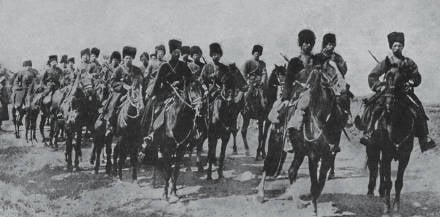
Then, a year and a half, Konstantin Iosifovich fought "like everyone else", earning during this time two St. George medals "For Bravery." The first is for the fact that at the end of April 1915 of the year, in addition to valuable information, it also dragged from the night search a serviceable light machine gun. For which the scout was awarded the second medal, the documents did not survive. But it is clearly not for the beautiful eyes and lush mustache. It is only known that at the same time Nedorubov was wounded twice, and, apparently, quite hard, because he was not treated in field hospitals, but in rear hospitals in Kiev and Kharkov. That is, the doctors worked hard on the Cossack.
At the end of May 1916, the finally recovered consignor returned to his native regiment. And, as it turned out, on time: the famous Brusilovsky breakthrough began on June 3, and the 1-I Don Cossack Division took an active part in it. Obviously, Nedorubov in the summer and autumn was heroic in such a way that a detailed description of his exploits would take a lot of place in government papers. Therefore, in the presentation to the St. George Cross of the 2 degree, it was stated simply: “for unparalleled courage and bravery”.
It is worth saying here that originally, due to some clerical error, another Georgy of the 3 degree was re-handed to Konstantin Iosifovich. But soon the misunderstanding was corrected: in the corresponding order on the 3 Cavalry Corps, the name of Nedorubov and the record “St. George 3 X degree of the degree of 40288” standing opposite her are crossed out, marked “No. 7799 2 degree” and the link: “See Corps Order No. 73 1916 of the Year. "
Well, before the onset of the New, 1917, the brave and successful conscript became the full George Knight. The cross of 1 degree to Nedorubov was handed after he and his scouts seized the headquarters of the German division, headed by its commander, an infantry general and all operational documents. This feat of the Cossack does not need any comments.
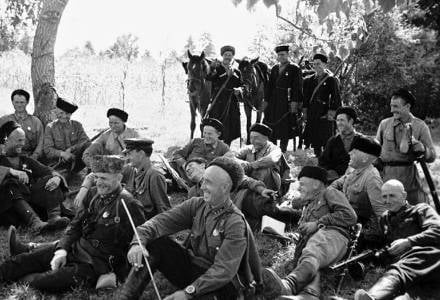
After all four soldier Georgy began to shine on Nedorubov’s chest, according to the statute of this award, he was promoted to sub-corps - the senior noncommissioned officer in the Cossack troops. So, in all its glory, with crosses and shoulder straps, he came to his native village in the fall, hoping to relax with family for all seven years of uninterrupted service and three and a half years of war that he spent without sleep and rest.
But there was no peace in the Quiet Don ...
"For people's power with their own people ..."
Up to the summer of 1918, Konstantin Iosifovich did not adjoin to either white or red, working on his yard and hut, which had noticeably decayed during the time that the Cossack spent at the front. But is it possible for a long time to remain at anything in a country gripped by a fratricidal war?
In late May, he again saddles his horse. And June 1, along with other villagers, joins the Cossack Regiment of Ataman Krasnov's 18 Cossack Regiment. However, Nedorubov didn’t have to fight for whites for a long time: July 12 he was captured and after a few days did not just begin to go on the attack under the red banner - he commands a squadron!
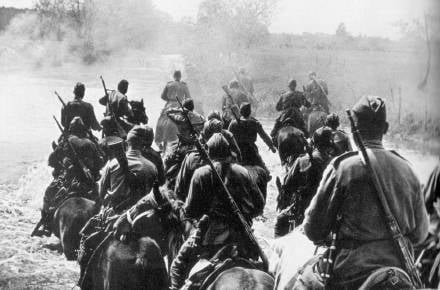
Such are the vicissitudes of fate. Well, in the Civil War and this did not happen.
For almost a year Konstantin Iosifovich has been fighting in the cavalry division of Mikhail Blinov, which consisted entirely of Cossacks, who recognized and accepted Soviet power. And therefore they fought for it fiercely and fiercely. It was the Blinov Cavalry Division, which was part of the 9 Red Army, which was thrown at the suppression of the Cossack uprising that broke out in the villages of the Upper Don Region in March 1919. And played a crucial role in his suppression.
Under the Buturlinovka, the Pancakeers clashed with the Cossack regiments of General Mamantov, and for almost a week exterminated each other with equal persistence and varying success. The village passed from hand to hand several times, until Budyonny’s cavalcore corps came to its rescue in favor of the Reds.
In June, 1919, an event occurred that could be, but did not become another turning point in Nedorubov’s life: he was captured again. And, of course, he was preparing to accept death ... It was the Cossack's sake that he was tried almost at home — on the farm of Bashkir Ust-Medveditsk District, where he was known to everyone, loved and respected by all. And it was not the military tribunal who was trying to judge, but the meeting of the St. George Cavaliers, who considered that Don Cossack blood had already been spilled enough, and therefore let Nedorubov go to all four sides: God, they say, you judge ...
So, less than a week went by, as a full St. George Cavalier again led a squadron of red cavalrymen. Famously fought under Yelanya, Rudny, Ust-Medveditskaya (now Serafimovich), in the Sal's steppes. In 1920, the Panin Division joined the 1 th cavalry corps of Dmitry Zloby, and Konstantin Iosifovich was appointed commander of the 8 th Taman cavalry regiment. After one of the battles with the Vrangel cavalry, Nedorubov was presented to the Order of the Red Banner. But at the headquarters of the Southern Front, the presentation was broken, believing that this was too much for the former tsarist podhorunzhy, who had been fighting for a month and a half from Krasnov.
So the red commander of the Nedorubov never received a single award in the Civil War. But I nevertheless met with my bullet: when the battles were already going on in the Crimea, under the Big Tokman, the machine-gun fire knocked the regiment out of the saddle. The bullet stuck in the lung, and Konstantin Iosifovich sneaked her there until the end of his days.
The war was already coming to an end, and therefore, after injuring the paint, they were demobilized for health, allowing them to go to their native lands. Since July, 1920, he headed the village council in his native farm Rubezhnoye. Then, when in the Don farms and stanitsa the new government began to create collective farms, headed by the one that was formed in the Berezovsky district.
At the end of 1920 - the beginning of 1930 - s, Nedorubov held a number of positions in Soviet and economic bodies until 1932 was appointed in April to the appointment of the collective farm chairman at Bobrov Farm. One sowing and harvesting conducted with dignity. And in 1933, as they say, came under a campaign: in the country, with a new force, they began to search for hidden enemies, pests, counterrevolutionaries and saboteurs. Where not found - appointed. Konstantin Iosifovich turned out to be one of such designated "enemies of the people": in the fall of 1933, "for the loss of grain in the field" he was convicted under article 109 of the Soviet Criminal Code on 10 years of camps. And the full George Knight, the former red regiment and the chairman of the collective farm became the foreman of the prisoners Dmitlag, who worked on the construction of the Moscow-Volga canal.
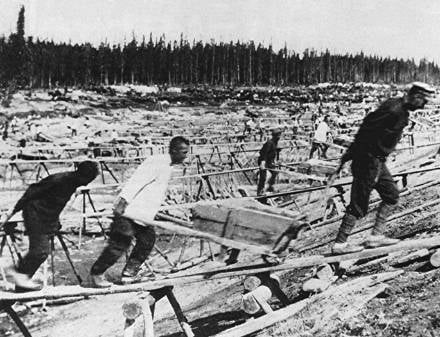
Three years Nedorubov waved a shovel and pushed the car at the largest construction site of the mid 1930-s, where more than 200 thousands of people worked. However, unlike the absolute majority, he was incredibly lucky: Konstantin Iosifovich was ahead of schedule, even before the end of construction, released with the wording “for good behavior and percussive work”. It seems that he did not work this way because he was madly in love with the Soviet government or considered himself guilty of something before it. Nedorubov was simply referring to that unique type of Russian people who can’t do anything in half, half-heartedly: fight like that, fight, and work like that, work!
After his release, Konstantin Iosifovich returned to his native village. He was not convicted of his previous conviction, he was not struck with rights, and therefore Nedorubov did not have any problems with employment. He worked as a storekeeper, brigadier on the collective farm, was in charge of the post office, and headed the machine and tractor station. 21 May 1941 celebrated his 52-th birthday.
And then the villagers, who were walking merrily and noisily at a celebration at a countryman, did not suspect that a new war was already at the threshold ...
And the enemy is all the same, and the Motherland is still the same
After the beginning of the Great Patriotic War on Don, as well as throughout the country, the formation of regiments and divisions of the people's militia began. They were those who for various reasons did not fall under the mobilization.
But if in Moscow or, say, Leningrad, the bulk of the volunteers were students and university professors who had a vague idea of military affairs, then from the villages spread along the banks of Khopyor, Medveditsa, Buzuluk, Chir and other tributaries of the Don, tried and tempered Warriors who had only one drawback - non-appealing age. But what is 50 or even 55 for a Cossack ?!
In October 1941 of the year Nedorubov on horseback arrived in the center of the Khopersky district, the stanitsa of Uryupinskaya, where the Cossack cavalry volunteer division was formed. Finding out all the details of what is happening and enlisting the support of the division commander Colonel S.I. Gorshkov, he returned to Berezovskaya. There, at a gathering, Konstantin Iosifovich proposed to create a Cossack hundred of veterans and the first to enroll in it.
The Cossacks, as usual, shouted "Lubo!", Reached for the note-sheets and immediately elected Nedorubov as their commander. Then it went all familiar order. Volunteers from neighboring villages - Malodelskaya, Sergievskaya, Razdorskaya, Ostrovskaya began to arrive in Berezovskaya. They came on their horses, in uniform and with their swords, and after them from the collective farms on sleds they brought up fur coats, food, and fodder, Cossack peaks made in collective farm workshops.
The problem arose only once, when the district department of the NKVD did not approve the candidacy of Nedorubov as the commander of the hundred formed. The arguments were iron - he fought for the whites, the former convict ... But then, strangely enough, the party organs intervened: the secretary of the Berezovsky district committee of the CPSU (b) Ivan Vladimirovich Shlyapkin personally vouched for the full Georgy cavalier and the former commander of the Red Army. An act, of course, very brave for the party leader of those times.
In general, in the first half of November 1941, Konstantin Iosifovich took his hundred to Mikhailovskoye Slobodka, where volunteer subunits that formed the cavalry division of the militia of the Stalingrad region gathered and were trained. There Nedorubov, officially approved as the commander of the hundreds and receiving lieutenant shoulder straps, for the first time ventured to put on his Georgiev.
At first, this act was perceived by fellow servicemen ambiguously: in the minds of many, the Cross of St. George continued to remain a “royal reward.” But the regimental and divisional authorities had the sense to look at it from the other side: the crosses were deserved until October 1917, and not for the dispersal of workers' demonstrations, but for courage and bravery in battles with the Germans, with whom the Cossacks were about to again get together in cruel fights. And “Georgia” those for the upbringing of young Red Army men were, perhaps, more necessary and more effective than any words, slogans and appeals of full-time political workers.
2 February The 1942 division was renamed the 15 th Don Cossack Cavalry and soon became part of the 17 th Corps Corps, which was ordered to defend the left bank of the Don River in its lower reaches and the eastern coast of the Azov Sea. In the summer, stubborn battles broke out there with German, Romanian and Italian units that were bursting into the North Caucasus.
In the middle of July, the Cossack regiment, in which Nedorubov’s hundred fought, reflected for four days the Germans' attempts to force the Kagalnik River in the Peshkovo area on the move. Then, with a dashing blow, he knocked the enemy out of the villages of Zadonsky and Aleksandrovka, where the Cossacks, led by the full Cavalier of St. George, destroyed more than 150 soldiers and officers of the enemy.
Then there were bloody battles for the stanitsa of Kanelovskaya, Kushchevskaya, Shkurinskaya. In Kushchevskaya, which passed from hand to hand three times, it came to melee. This is where the Cossack swords and daggers "drank blood and ate meat"! In the same place, reflecting the next attack, Konstantin Iosifovich, having chosen a convenient position on the flank, personally put down the Hitler’s 72 machine gun. And in the same place he lost his son Nicholas, who fought in his hundred. I thought that forever. But fate was favorable to the Nedorubovs.
What happened to Nicholas seems to be a miracle. Having received wounds at mortar shelling of 13 (!), He lay for three days with a half-covered land. Quite accidentally, the inhabitants of the stanitsa stumbled upon it when they buried the fallen Cossacks in mass graves: the bodies began to decompose under the scorching sun, and the Nazis, who settled in Kushchevskaya, were afraid of an epidemic. Risking their lives, the Cossacks Matryona Tushkanova and Serafima Sapelnyak carried Nicholas to the hut at night, washed and bandaged their wounds. And then they nursed the young man, changing the products for bandages and medicines in the Romanian hospital, which was located in Kuschevskaya. And so for five months, until the village was liberated part of the 151 th Red Banner Rifle Division ...
And Nedorubov Sr., who all this time considered his son dead, beat the enemy with tripled hatred and anger. At the end of August, 1942-th his hundred, having infiltrated the front line, crushed the rear convoy, destroying 20 machines with military property and around 300 fascists. 5 September in a battle for the height of 374,2 near the village of Kura, Absheron district of the Krasnodar Territory, Lieutenant Nedorubov single-handedly got to the mortar battery, which particularly annoyed the Don, threw it with grenades and destroyed the entire cannon servant from the PCA. At the same time, he himself was wounded, but he did not leave the location of the regiment. October 16 near the village of Martuki, a hundred Nedorubov per day repulsed four attacks of the SS and almost all fallen on the battlefield. The fifty-three-year-old lieutenant himself received 8 (!) Bullet wounds.
The war was interrupted for a while. Konstantin Iosifovich was in Sochi hospital. Then he was transferred to be treated in Tbilisi, where the military-medical commission concluded that Nedorubov was no longer suitable for military service for health reasons.
Drooping his head, the Cossack returned to his native village. And there he was waited for at once by two joyful news: in one letter, which came from Kushchevskaya, it was reported that the son Nikolai was alive. And in the second, colleagues from the home division congratulated Konstantin Iosifovich on awarding the Order of the Red Banner.
Well, how could an old warrior sit at home after this? How he caught up with the advancing division, how he found his regiment in the front-line leapfrog and whirlwind, as he persuaded the authorities to re-enlist him in the service - history is silent. But the fact remains: at the end of May 1943, Lieutenant Nedorubov took command of the squadron of the 41 Guards regiment of the 11 Guards Cavalry Division of the 5 Guards Don Cossack Corps.
He fought as best he could.
And as we knew how to fight the St. George Cavalier, we already know ...
Therefore, it is not surprising that 26 of October 1943 was awarded the title of Hero of the Soviet Union by decree of the Presidium of the Supreme Soviet of the USSR Konstantin I. Nedorubov.
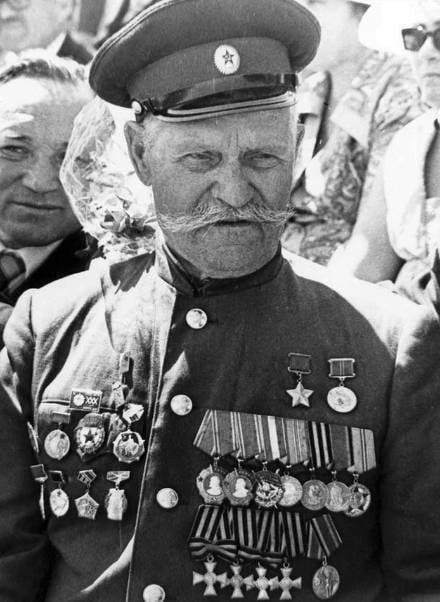
Then there were fights in Ukraine and in Moldova, in Romania and Hungary. In December, the 1944 th in the Carpathians Guard captain Nedorubov received another injury. This time it was so difficult that I had to part with the military service.
Veteran of the Three Wars
AFTER the war Konstantin Iosifovich plunged into a peaceful life: he was in charge of the social security department, the road department, the forestry enterprise. At the same time he led an active social activity: he was secretary of a party organization, a deputy of the district council, often visited military units, met with some venerable Soviet writers, including “the singer of the Pacific Don” Mikhail Sholokhov.
October 15, 1967 Nedorubov, together with twice Hero of the Soviet Union General (future Marshal aviation) Alexander Efimov and a retired senior lieutenant Ivan Afanasyev, a member of the defense of Pavlov’s house, was part of the torch-carrying group that delivered the Eternal Flame from the Volgograd Square of the Fallen Fighters to the newly opened military glory hall of the memorial complex on Mamaev Kurgan.
At these celebrations, as well as at other pompous events, where the illustrious warrior was often invited, on the paramilitary uniform of Konstantin Iosifovich there were Gold Star and four crosses of St. George that he wore, not hesitating and not afraid of idle conversations. Someone was so embarrassed by this neighborhood, someone was amazed and delighted. But no one left indifferent.
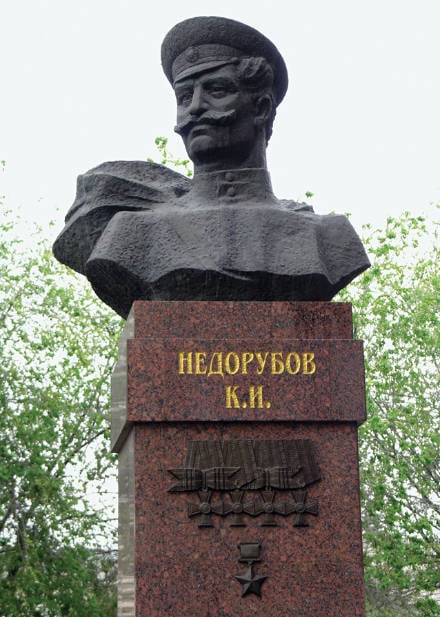
And in May 1969, residents of the village of Berezovsky and all Severodonsky districts of the Volgograd region celebrated the 80 anniversary of Konstantin Iosifovich. At the invitation of the Hero and the full cavalier of St. George, Lieutenant-General S. I. Gorshkov, a former division commander, who first allowed Nedorubov to wear "royal crosses" and the commander of the 42 Guards Colonel Colonel M. A. Karapetyan, who once took take the liberty of taking on the service of an old Cossack written off by doctors.
At the same time, the authorities presented to the honored veteran of three wars a new spacious house, in which he lived until December 1978 ...
Information